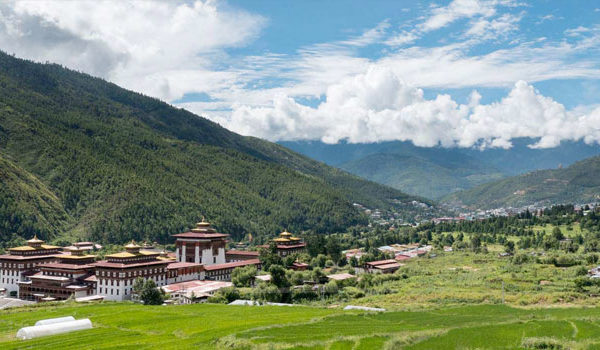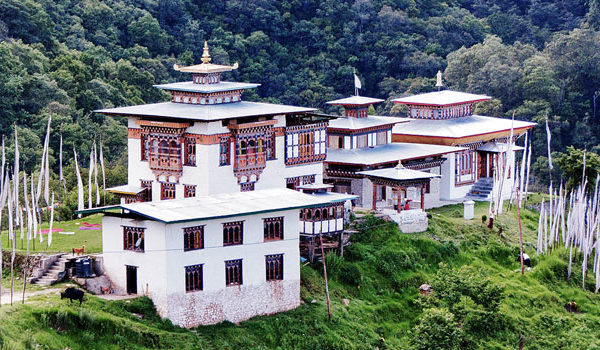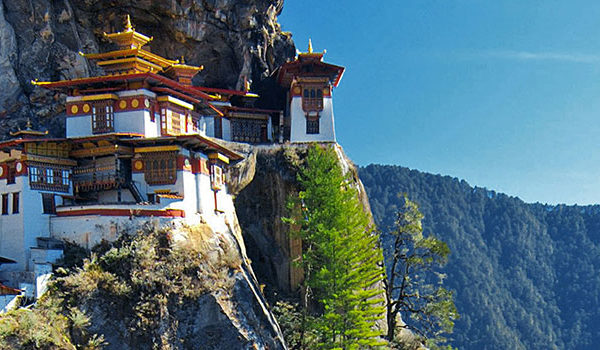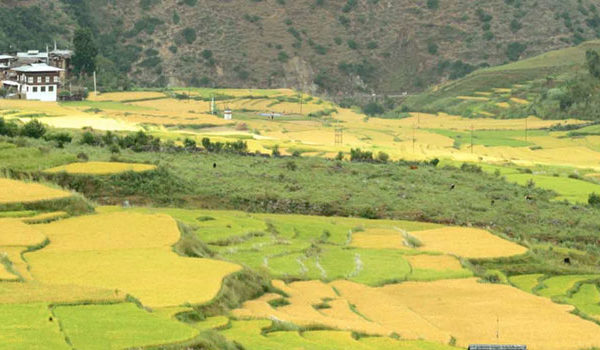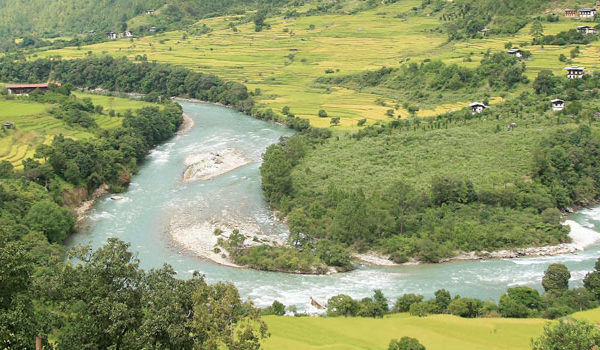The Last Shangri-La tour of Bhutan is our effort to introduce you to the rich cultural heritage of this tiny Himalayan kingdom also known as the last Shangri-La. Your week-long tour in Bhutan begins with sightseeing in the country’s capital, Thimphu, where we visit the Memorial Chorten, mini- zoo, National Institute of Traditional Medicine, folk heritage museum and the majestic Tashichho Dzong (fortress).
Next, we travel to Punakha via Dochula pass (3,100m) and tour the Chimi Lhakhang temple on the way. We also visit the Punakha Dzong and explore the amazing Gangtey village before heading to Paro. In the beautiful Paro valley, You will visit Rinpung Dzong and Kichu Lhakhang temple. Our cultural journey ends with a hike to the famous Tiger’s Nest Monastery which is a perfect way to end one’s journey in the last Shangri-La.
Historical Central Bhutan Tour
- Trip Code: Historical Central Bhutan Tour
- Trip Type: Tour
- Max. Altitude: 3100m
- Travel Mode: Air/Coaches
| Trip Code | Historical Central Bhutan Tour |
| Trip Duration | 11 Days |
| Trip Type | Tour |
| Trip Grade | Moderate |
| Min Group Size | 2 |
| Max Altitude | 3100m |
| Trip Start | Paro |
| Trip End | Paro |
| Best Season | Mar-May & Sep-Nov |
| Transportaion | Air/Coaches |
| Meals | All meals |
| Acommodation | Hotels/Resorts |
Your Guide from Bhutan will receive you at the airport and drive you the short distance to the hotel. After Tea, drive to the ruins of the Drukgyel Dzong, built in 1647 by the Great Shabdrung Ngawang Namgyal, father and unifier of medieval Bhutan, the dziong was destroyed by accidental fire and left in ruins as an evocative reminder of the great victories it was built to commemorate. Explore the ramparts and on a clear day experience an unforgettable view of Mt. Jhomolhari (7,314 m). On the way back, visit Kichu Lhakhang, built in 659 A.D by the Tibetan king Srongsen Gampo. This Monastery is one of the 108 monasteries built across the Himalayan region by the Tibetan King to subdue the Demoness that lay across the Himalayan region. The rest of the monasteries lie in other neighboring countries. Dinner and overnight in Hotel.
After breakfast a short drive takes us to Satsam Chorten, the trail climbs through beautiful pine forest, many of the trees festooned with Spanish moss, and an occasional grove of fluttering prayer flags. We stop for a rest and light refreshments at the Taktsang Jakhangi (cafeteria) and then walk a short distance until we see, clearly and seemingly within reach, Taktsang monastery. The primary Lhakhang was built around Guru Rinpoche’s meditation cave in 1684 by the Penlop of Paro, Gyaltse Tenzin Rabgay, this incredible monastery clings to the edge of a sheer rock cliff that plunges 900 meters into the valley below. Legend has it that Guru Padmasambhava, the tantric mystic who brought Buddhism to Bhutan in 747 AD, flew here on the back of a flying tiger, Dorji Drolo, said to be his favourite consort. After lunch, visit Ta Dzong (built in1656 and renovated in 1968), an ancient watchtower, which now houses the National Museum. Below the museum is the Rinpung Dzong (literally meaning “Heap of Jewels”), the centre of civil and religious authority in this valley, built in 1646 by Shabdrung Ngawang Namgyal.Ini the evening, drive to Thimphu. Overnight in a Hotel.
After breakfast, visit the National Memorial Chorten (1974) built in honour of our late King Jigme Dorji Wangchuk and the Dupthop Lhakhang one of the few surviving nunneries in Bhutan. Then we will visit the National Library, stocked with ancient Buddhist manuscripts, and the Painting School where traditional art is still kept alive through instructions in the art of painting Thangkas (sacred Buddhist religious scrolls). After lunch we will drive to the Traditional Medicine Institute where medicines are prepared according to ancient practices, and to Lungtenzampai to observe the Royal silversmiths and Bhutanese paper factory at work. Other highlights include a visit to the Tashichho Dzong, seat of the national government and the Central Monastic Body, including the summer residence of the Je Khenpo (Chief Abbot of Bhutan). We finally will visit the Handicrafts Emporium followed by shopping for souvenirs in the shops of Thimphu. Overnight in a Hotel.
After breakfast, visit Folk Heritage Museum, Textile Museum, Changangkha Lhakhang and Philatelic office. After lunch, visit Silversmith at work and the Handmade paper factory. Overnight in a Hotel.
(72 Kms, 3 hours drive). After breakfast, drive to Punakha via Dochula pass. If the weather is clear, we stop for a while at Dochula pass to view the Higher Himalayas. On the way, stop for a while to view Chimi Lhakhang, which was built by Lama Drukpa Kuenley in the 15th century. He subdued the demons with his “Magical Thunderbolt”. The Temple is also known as “the Temple of Fertility”. Lunch at Punakha. After lunch, visit Punakha Dzong built in 1637 by Shabdrung Ngawang Namgyal and is situated between Pho Chu (Male river) and Mo Chu (Female river). For many years until the time of the second king, it served as the seat of the Government. The construction of the Dzong was foretold by Guru Rimpoche, who predicted, “a person named Namgyal will arrive at a hill that looks like an elephant”. There was a smaller building here called Dzong Chu (Small Dzong) that housed a statue of Buddha. It is said that Shabdrung ordered the architect, Zowe Palep, to sleep in front of the statue, while Palep was sleeping, Shabdrung took him in his dreams to Zangtopelri and showed him the palace of Guru Rimpoche. From his vision, the architect conceived the design for the new Dzong, which in keeping with the tradition, was never committed to paper. The Dzong was named Druk Pungthang Dechen Phodrang (Palace of Great Happiness). The war materials captured during the battle with Tibetans are preserved here. Punakha is still the winter residence of Je-Khenpo and King Jigme Dorji Wangchuk convened the new national Assembly here in 1952. In the evening, hike to Khamsung Yulley Namgyal Choling Monastery. Overnight in a Hotel.
After breakfast, drive to the beautiful valley of Gangtey. Enroute sightseeing in the valley of Wangdiphodrangi includes: visit to Wangdiphodrang Dzong built in 1638. Legend has it that as the people were searching for the site of the Dzong, four ravens were seen flying away in four directions. This was considered an auspicious sign, representing the spread of religion to the four points of the compass. The Dzong is situated at the confluence of Mo Chu and Tang Chu rivers. Drive further to Gangtey. On arrival check in to Gangtey Gompa House. Visit Gangtey Gompa Monastery, from outside. Gyaltse Pema Thinley, the grandson and mind reincarnation of Pema Lingpa founded the Temple in 1613, and Tenzin Legpai Dhendupi, the second re-incarnation, built the temple. The present Abbot, Kunzang Pema Namgyal is the ninth re-incarnation. It is a Nyingmapa monastery and is affiliated to other Nyingmapa monasteries including Tamshing in Bumthang. Explore Phobjikha valley, famous for the Black Necked Cranes during winter. Dinner and overnight at the Guest House.
After breakfast, drive to Trongsa. Visit Trongsa Dzong, the most impressive dzong of Bhutan, built in its present form in 1644 by Chogyal Minjur Tempa, the official who was sent by Shabdrung to unify eastern Bhutan and enlarged at the end of the 17th century by Desi Tenzin Rabgay. Trongsa Dzong is the ancestral home of the present Royal Family and first two hereditary kings ruled Bhutan from this Dzong. Then Visit Ta Dzong, an ancient watch tower. The chapel inside the Ta Dzong is said to be dedicated to the Trongsa Penlop Jigme Namgyal. After Lunch, drive to Bumthang. Overnight in a Hotel.
After breakfast, visit Jakar Dzong, which literally means “The Castle of White Bird”. The current structure was built in 1667 and visits Lamey Goemba, a large palace and monastery built in the 18th century by Dasho Phuntsho Wangdi. Visit Jambay Lhakhang, built by King Srongsen Gampo of Tibet in the year 659 on the same day as Kichu Lhakhang in Paro. The temple was visited by Guru Rimpoche during his visit to Bumthang and was renovated by Sindhui Raja after Guru Rimpoche restored his life force. Under the temple is said to be a lake in which Guru Rimpoche had several Terms. In October one of the most spectacular festivals, “Jambay Lhakhang Drup” is staged here. After lunch, Visit Chakhar (Iron Castle) Lhakhang, it is the site of the palace of the Indian King, the Sindhu Raja who invited Guru Rimpoche to Bumthang.
The Original palace was made of Iron and hence the name Chakhar. The saint Dorji Lingpa built the Current building in the 14th century. Its correct name is Dechen Phodrang. We then visit Kurjey Lhakhang that is named after the body print of Guru Rimpoche, built in 1652 by Minjur Tempa. Visit Tamshing Lhakhang (Temple of the good message), established in 1501 by Pema Lingpa and is the most important Nyingmapa temple in the kingdom. In the evening, visit Membarstho which literally means, “The burning Lake”. Overnight in a Hotel.
Early breakfast, drive to Thimphu. Overnight in a Hotel.
After breakfast, visit Simtokha Dzong built in 1627 by Shabdrung Ngawang Namgyal. This Dzong is the oldest Dzong in Bhutan and presently houses a Monastic school. The stroll in the town/visit the Handicraft emporium. After Lunch, drive to Paro. Visit a Farm House. Overnight in a Hotel.
Early morning, drive to Airport
For the price write ua an email: Info@nectravels.com
Trip Cost Include:
| » | Airport pickup and drop |
| » | All accommodation |
| » | All Meals (breakfast/Lunch/Dinner) |
| » | All Transportation by car van/Bus/Coaster |
| » | One English Speaking Guide |
| » | Sightseeing Entry fee |
| » | Bhutan Travel Permit |
| » | Airfare |
| » | Bhutan Visa fee (USD 20.00) |
| » | Tourism Development fund(TDF USD 10.00) |
| » | Bottle Drinks |

